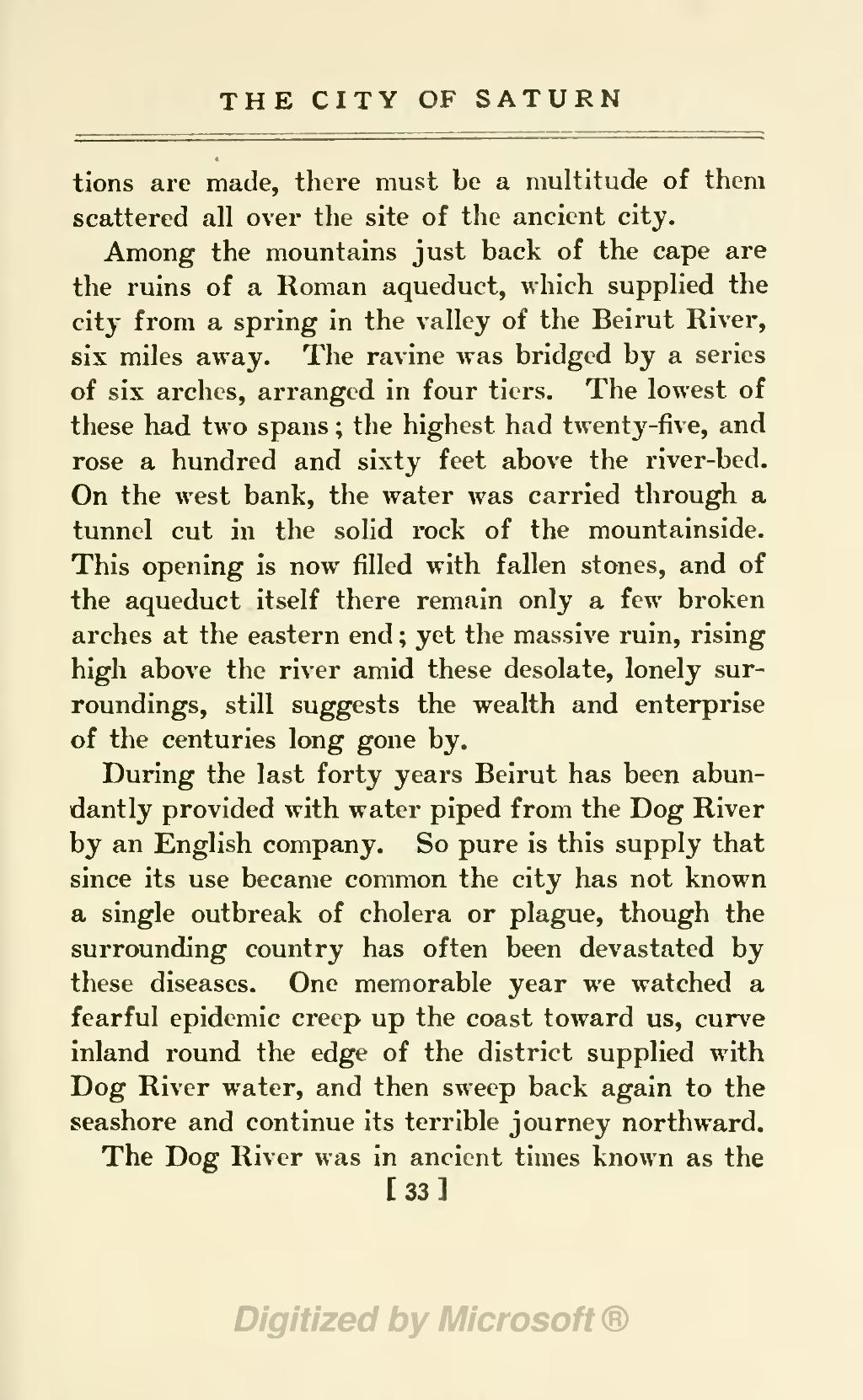THE CITY OF SATURN
tions are made, there must be a multitude of them scattered all over the site of the ancient city.
Among the mountains just back of the cape are the ruins of a Roman aqueduct, which supplied the city from a spring in the valley of the Beirut River, six miles away. The ravine was bridged by a series of six arches, arranged in four tiers. The lowest of these had two spans; the highest had twenty-five, and rose a hundred and sixty feet above the river-bed. On the west bank, the water was carried through a tunnel cut in the solid rock of the mountainside. This opening is now filled with fallen stones, and of the aqueduct itself there remain only a few broken arches at the eastern end; yet the massive ruin, rising high above the river amid these desolate, lonely surroundings, still suggests the wealth and enterprise of the centuries long gone by.
During the last forty years Beirut has been abundantly provided with water piped from the Dog River by an English company. So pure is this supply that since its use became common the city has not known a single outbreak of cholera or plague, though the surrounding country has often been devastated by these diseases. One memorable year we watched a fearful epidemic creep up the coast toward us, curve inland round the edge of the district supplied with Dog River water, and then sweep back again to the seashore and continue its terrible journey northward. The Dog River was in ancient times known as the
[ 33 ]
